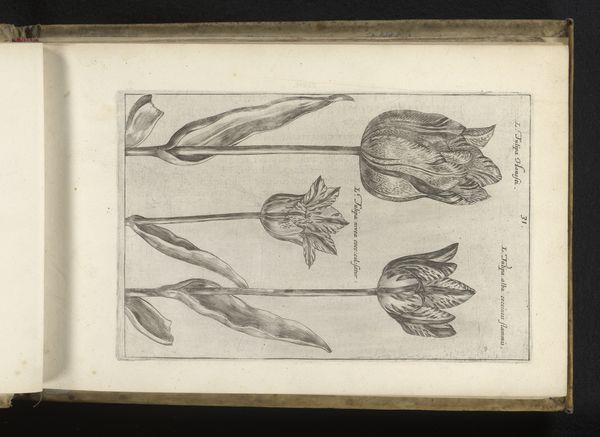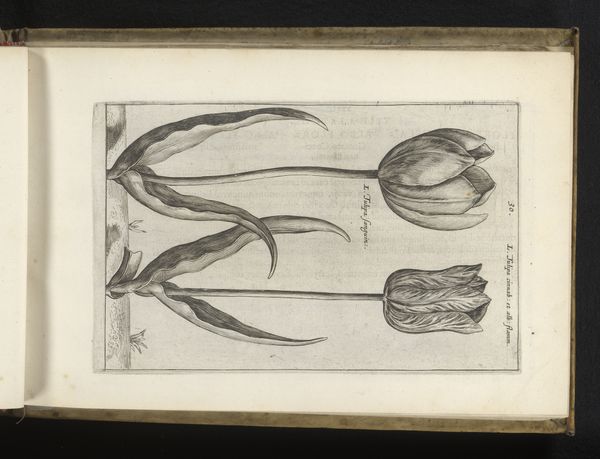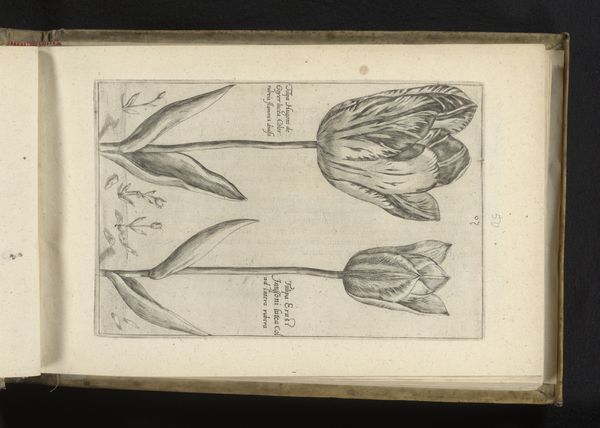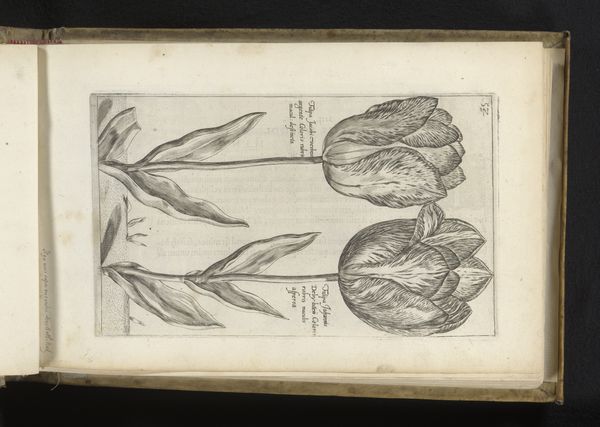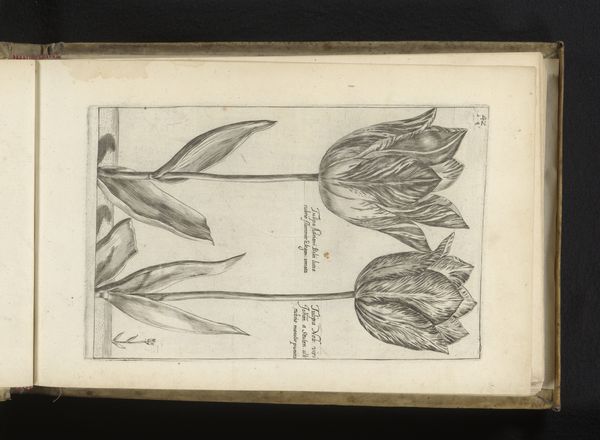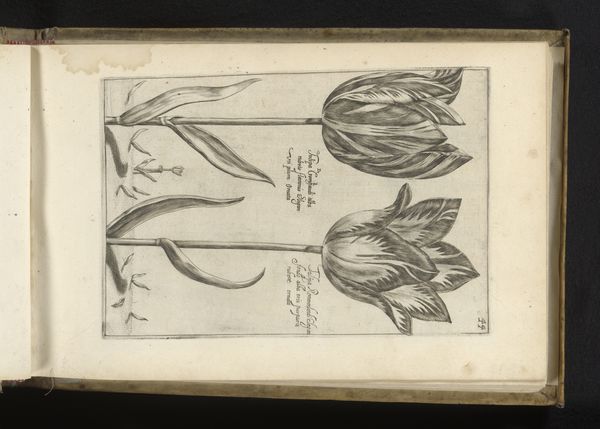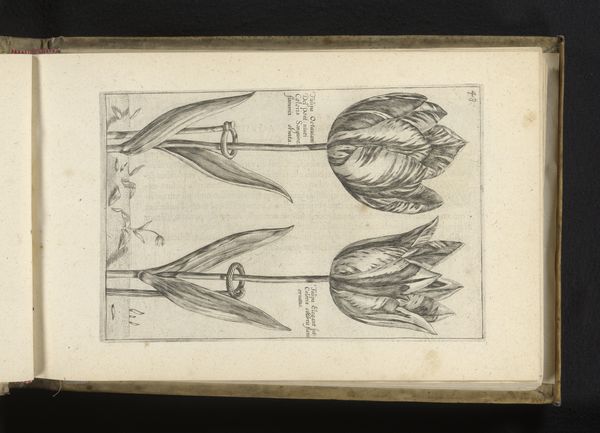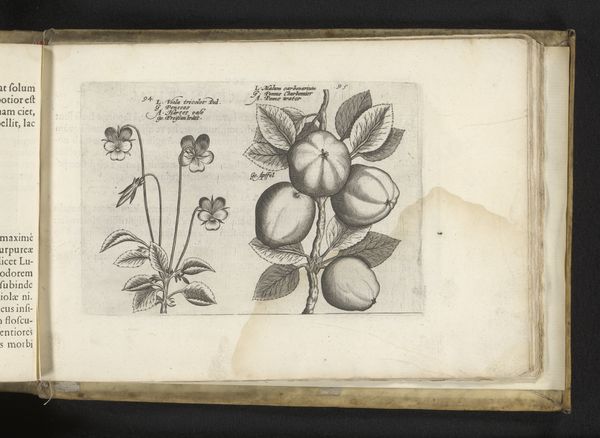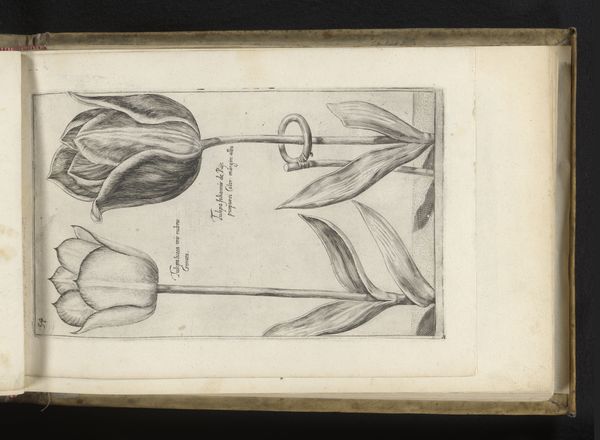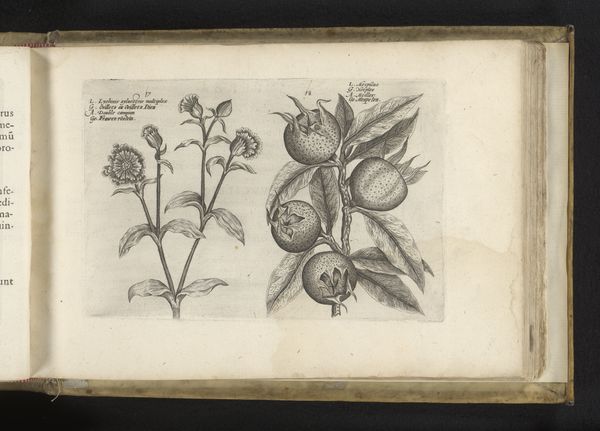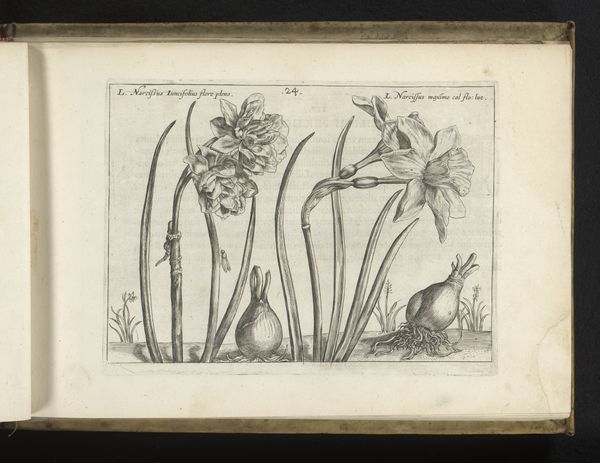
drawing, print, paper, ink, engraving
#
drawing
#
dutch-golden-age
# print
#
paper
#
ink
#
engraving
Dimensions: height 215 mm, width 147 mm
Copyright: Rijks Museum: Open Domain
Editor: This is "Drie tulpensoorten," or "Three Types of Tulips," a 1617 print in ink on paper by Crispijn van de Passe the Younger. The fine lines of the engraving give these tulips such a delicate air. What strikes me is how carefully observed they are, almost like a botanical study. What do you make of it? Curator: It's more than just botanical illustration, though. The tulip in the 17th century Netherlands was potent. As a relatively new import from the Ottoman Empire, it quickly became an evocative status symbol. Each variety, painstakingly cataloged as we see here, carried immense value. This engraving encapsulates the infamous "Tulip Mania," that brief but telling episode in Dutch financial history. Editor: So, each bloom isn't just a flower but also represents wealth, almost like currency? Curator: Exactly! Notice how meticulously detailed the petals are, how each slight variation in form and coloration is rendered with precision. These differences signified distinct varieties, commanding different prices in the market. The inscriptions are vital: they tell you each variety’s Latin name and so its monetary and social worth. Can you see how this is akin to keeping an inventory of a precious commodity? Editor: Yes, the level of detail now seems less about scientific accuracy and more about a kind of...record keeping of status. Almost like portraits of people, but using flowers. It's so fascinating how one image can capture economic history. Curator: Precisely! The symbolism connects us to notions of beauty, desire, and social position that are enduring human preoccupations. Looking closely at something like this gives us insight into the hopes and anxieties of people from a vastly different era. Editor: I never would have guessed such a simple flower study could hold so much social history! I’ll certainly never look at a tulip the same way again. Curator: Indeed! The humble flower becomes a powerful lens through which we can examine a culture's values.
Comments
No comments
Be the first to comment and join the conversation on the ultimate creative platform.
